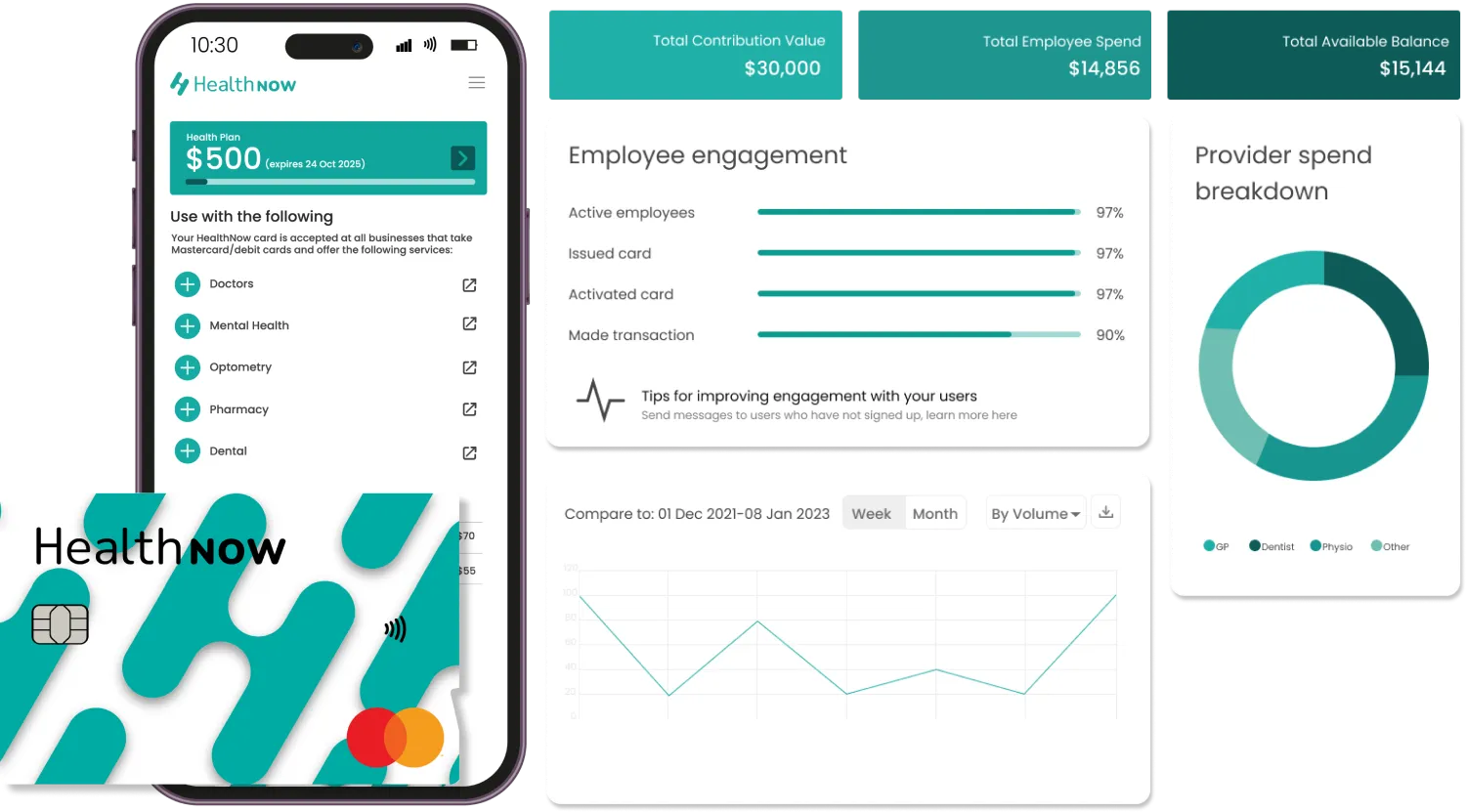Tension headaches are shown to affect up to 78% of people at some point in their lives, with many people suffering from them repeatedly and to a debilitating extent. With the average person spending over 90,000 hours – or one-third of their lives at work – and with work being linked to stressful situations in many cases, it’s highly likely that as an employer, you’ll have many employees suffer from tension headaches during their time with you.
So what exactly are tension headaches and how can you help your team manage or even prevent them?
Tension Headaches: The Basics
Tension headaches feel like tightness or pressure – like a tightening band – around your head. They’re the most common type of headache experienced in adults. They can cause pain in the head, neck and behind the eyes that sometimes starts from the shoulder and neck, giving them the potential to be fairly disruptive to everyday life including work, sleep, exercise – and generally a person’s ability to do the things they love. They can also lead to a person feeling tired, irritable, sensitive to light or noise – and just generally mentally checked out.
Unfortunately, taking painkillers is only a very temporary (though often very welcome) solution that never gets down to the real cause of the problem, instead only temporarily masking symptoms without ever giving a person a real pathway forwards with better outcomes and reduced rates of recurring headaches.
What Causes A Tension Headache?
While the exact mechanism that causes tension headaches is not well understood in the research, muscle tension or spasms around your head, neck and jaw are considered to be a key factor in the development of tension headaches. This tension may be caused by:
- Stress – tension headaches are well documented in the research to be linked to stress, with the physical effects of stress leading to spasms in the neck and scalp. This may be ongoing stress related to work, anxiety or emotional stress, experiencing stressful events or having hectic, stressful work days.
- Poor posture related to how you sit, stand or lie down. This includes sitting or standing with your head and neck in an awkward position for a prolonged period, as well as overuse of mobile devices where the neck is craned in a tech neck position. With many sitting at an office job for prolonged periods, or lifting heavy objects – work posture is a big contributing factor.
- Eye strain – focusing on a computer screen or other device for a long period of time, as many do at work, can cause eye strain and lead to muscle tension in the neck and scalp..
- Fatigue – not getting enough sleep, having disturbed sleep or general fatigue can cause muscle tension and increase the likelihood of tension headaches. This is particularly prevalent in those who have tight deadlines and spend many late nights at work.
- Dehydration: not drinking enough water or fluids can cause dehydration and lead to tension headaches.
- Certain foods and beverages: Some people may experience tension headaches as a result of consuming certain foods or beverages, such as alcohol or caffeine.
Identifying Tension Headaches
Many people can tell when they are having a tension headache due to experiencing aching, tight pain on both sides of the head with tenderness in surrounding areas and other features like sensitivity to light or to sound. In 2018, the International Headache Society (IHS) developed a diagnostic criteria, as part of the International Classification of Headache Disorders. This includes:
- Having at least ten headache episodes that fulfil the following criteria
- Headaches that last between 30 minutes to as long as 7 days
- Exhibiting at least two of the following four characteristics:
- Bilaterally located
- Pressing or tightening (non-pulsating) quality
- Mild or moderate in intensity
- Not exacerbated by routine physical activity, e.g., walking or climbing stairs
- Exhibiting both of the following:
- No nausea or vomiting
- No more than one of photophobia (light sensitivity) or phonophobia (noise sensitivity)
- The headache is not better explained by a different kind of headache diagnosis.
From here, your tension headaches are further subdivided into one of three subtypes based on how often you experience them.
- Infrequent episodic TTH: at least ten episodes of headache occurring on less than one day per month, and on average less than 12 days per year.
- Frequent episodic TTH: at least ten episodes of headache occurring between 1 to 14 days per month on average, for over 3 months (so greater than 12 episodes and on less than 180 days per year)
- Chronic TTH: headache occurring on more than (or equal to) 15 days per month on average, for more than three months (so greater or equal to 90 episodes occurring on 180 days per year)
So How Are Tension Headaches Treated Or Managed?
There are various treatment options for tension headaches, ranging from self-care to professional help. These include:
Self-care measures
- Stress reduction techniques: Stress can cause tension headaches, so finding ways to manage stress can be helpful. Some stress reduction techniques include meditation, deep breathing exercises, or progressive muscle relaxation.
- Exercise: Regular exercise and physical activity can reduce muscle tension and help prevent tension headaches.
- Good posture: Maintaining good posture and ergonomic adjustments in workstations can prevent tension headaches caused by poor posture.
- Rest and relaxation: Getting enough sleep, taking breaks during the workday, and practicing relaxation techniques such as warm compresses or massage on the neck and shoulders can help relieve tension headaches.
Over-the-counter pain relievers
- Nonsteroidal anti-inflammatory drugs (NSAIDs) such as ibuprofen or aspirin can help relieve pain and reduce inflammation.
- Acetaminophen can also help relieve pain, but does not reduce inflammation.
Prescription medications from your GP
- These may come in the form of muscle relaxants, antidepressants, botox injections and more – and are prescribed after a comprehensive evaluation and suitability assessment.
Physical therapy
- Physical therapy can help relieve muscle tension and improve posture, which can prevent tension headaches. Your physical therapist may teach you exercises to strengthen and stretch your muscles.
Cognitive-behavioural therapy
- This type of therapy can help you identify and change negative thought patterns and behaviours that may contribute to tension headaches.
- Relaxation techniques such as deep breathing, meditation, or progressive muscle relaxation may also be included in cognitive-behavioural therapy.
Supporting Your Employees In Managing And Preventing Tension Headaches
While it’s one thing to know what can be done for tension headaches and which health professionals can help you get the best long-term outcomes, it’s another to have the funds to be able to access these services to proactively prioritise a person’s health. This is where many innovative, proactive and forward-thinking businesses have intervened to offer their team employer aid payments via specific digital health wallets that enable employees’ to take care of health problems including tech neck.
Employer aid is available through the free and secure HealthNow platform, where payments to your employee’s health wallets can be automatically made monthly or at a frequency and dollar value that you choose. Many businesses are choosing to opt for employer aid instead of private health insurance payments, which often come with strict criteria, exclusions, pre-existing condition limitations, and that rolls over and is ‘lost’ if it’s not used within a calendar year.
With HealthNow’s employer aid payments, the funds you contribute can only be spent on health and medical services and products registered with the HealthNow platform, allowing your team to access the care they need, when they need it – and before ongoing pain or problems impact their work performance.
HealthNow provides updates on your impact to help you measure the value of employer aid within your company. Your contributions are not subject to the Fringe Benefits Tax, are free for your employees to use (they even get a free $10 credit with their free sign-up), and HealthNow has an ever-growing trusted network of medical providers to keep your staff healthy and happy.
To get started, register your company’s interest via this contact form and a HealthNow team member will get back to you promptly.






